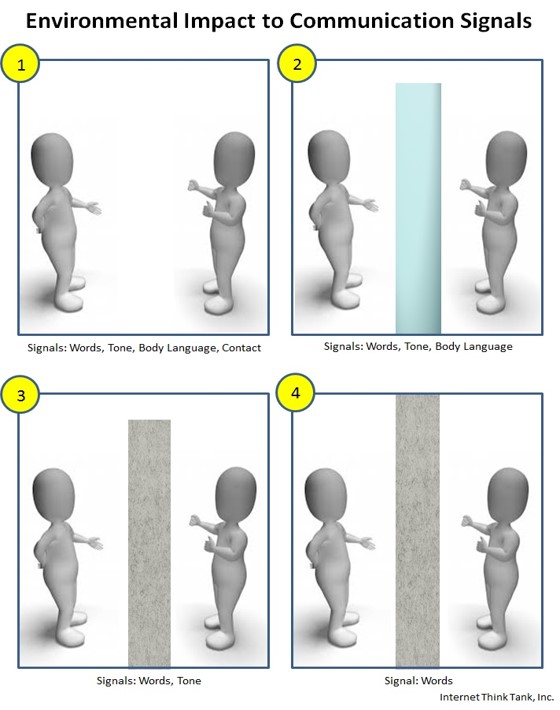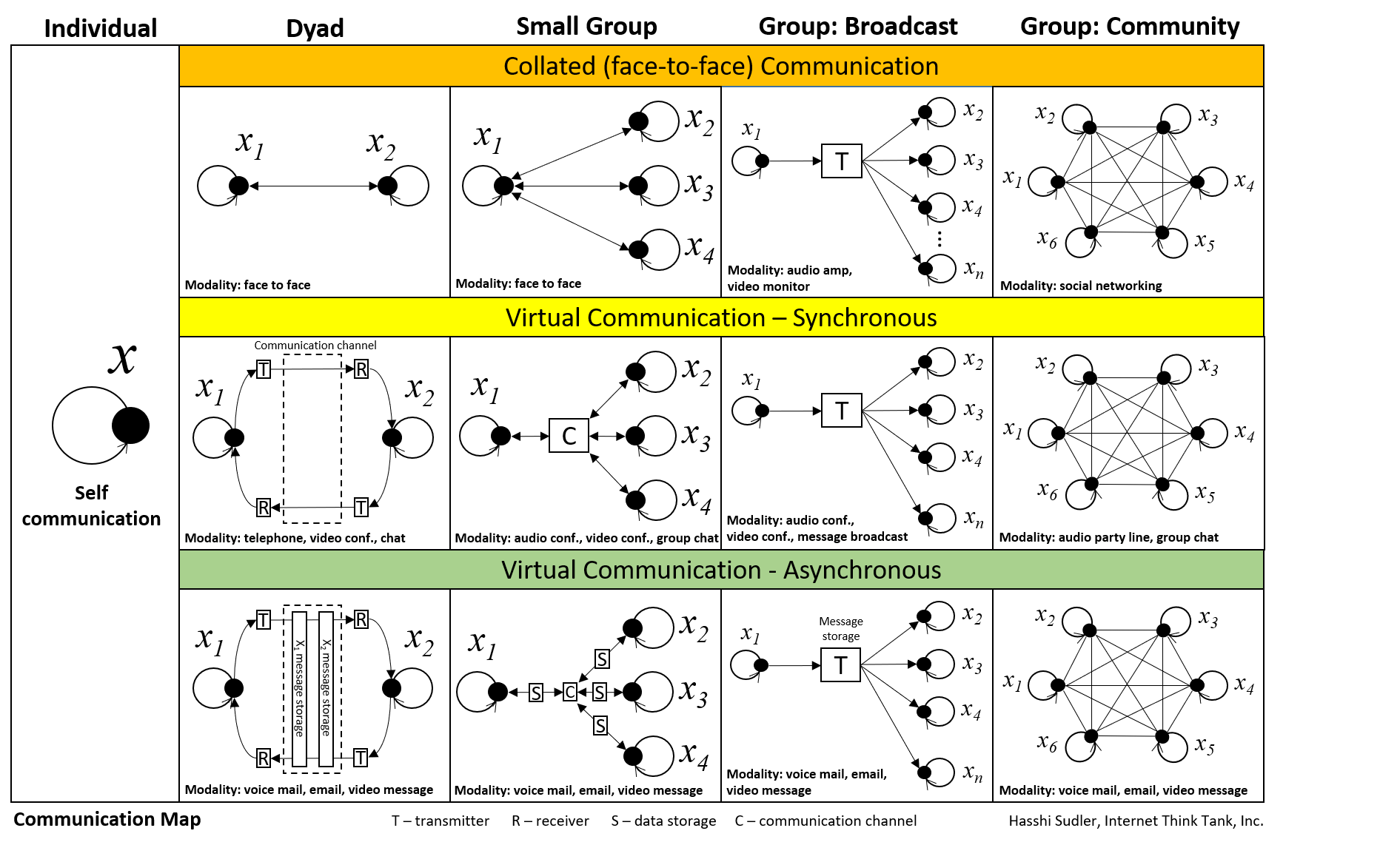
Internet Think Tank uses a basic receiver, processor, and transmitter illustration to model dyadic exchanges. The unique element in this model is the representation of self-talk, where a transmitted signal is also sampled by its own receiver, a process used in human cognition.


This illustration graphically demonstrates the four discrete signals humans use as part of communication: 1. words, 2. intonation, 3. body language, and 4. touch. The illustration shows how each communication signal can be discretely removed based on environment configurations. Internet Think Tank developed this model as a basis to measuring the effects of each signal to the overall meaning and behavior between two communicating parties.


Internet Think Tank developed a Communications Map for the field of communication theory. The Communication Map can be thought of as a periodic table of communication that identifies every communication situation an individual may be engaged. It provides a comprehensive look at how self-talk factors into all forms of communication modalities. It also illustrates the impact of synchronous and asynchronous virtual communication on signal exchanges.

